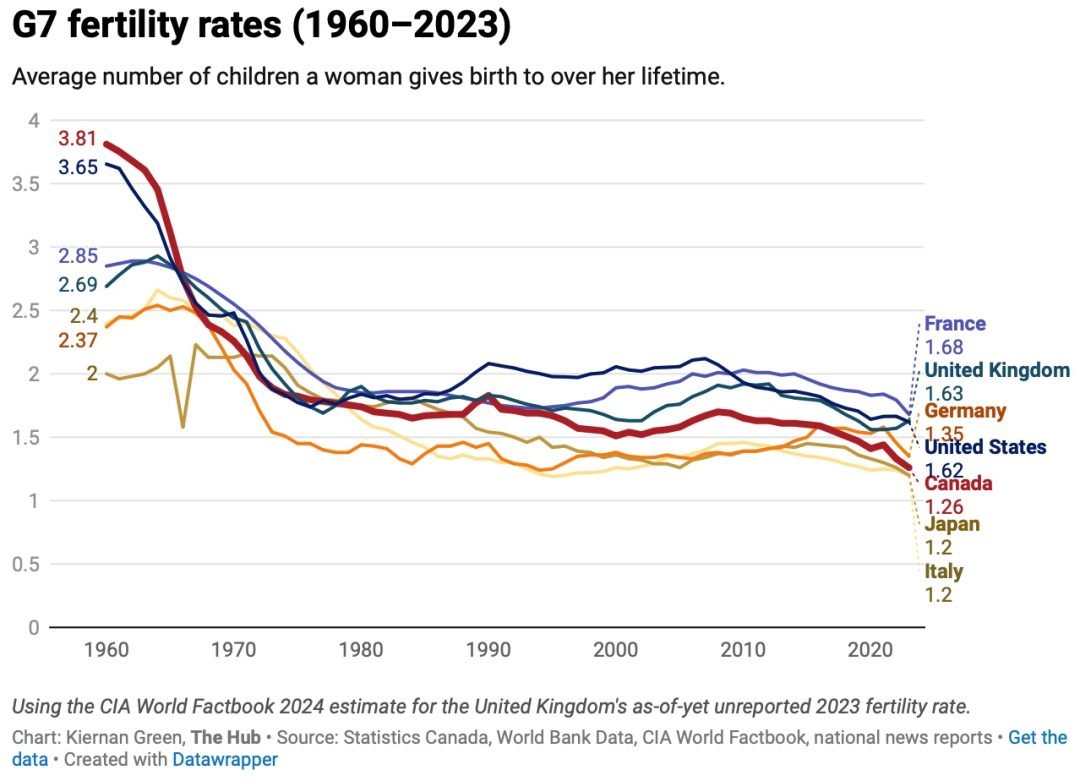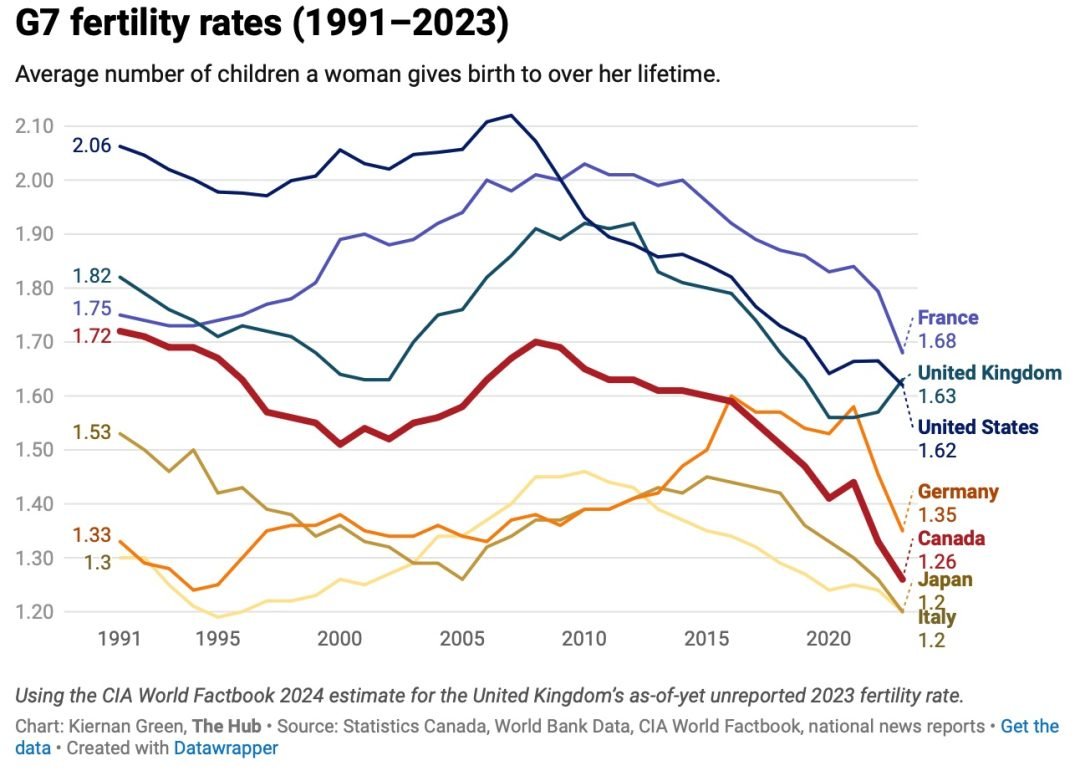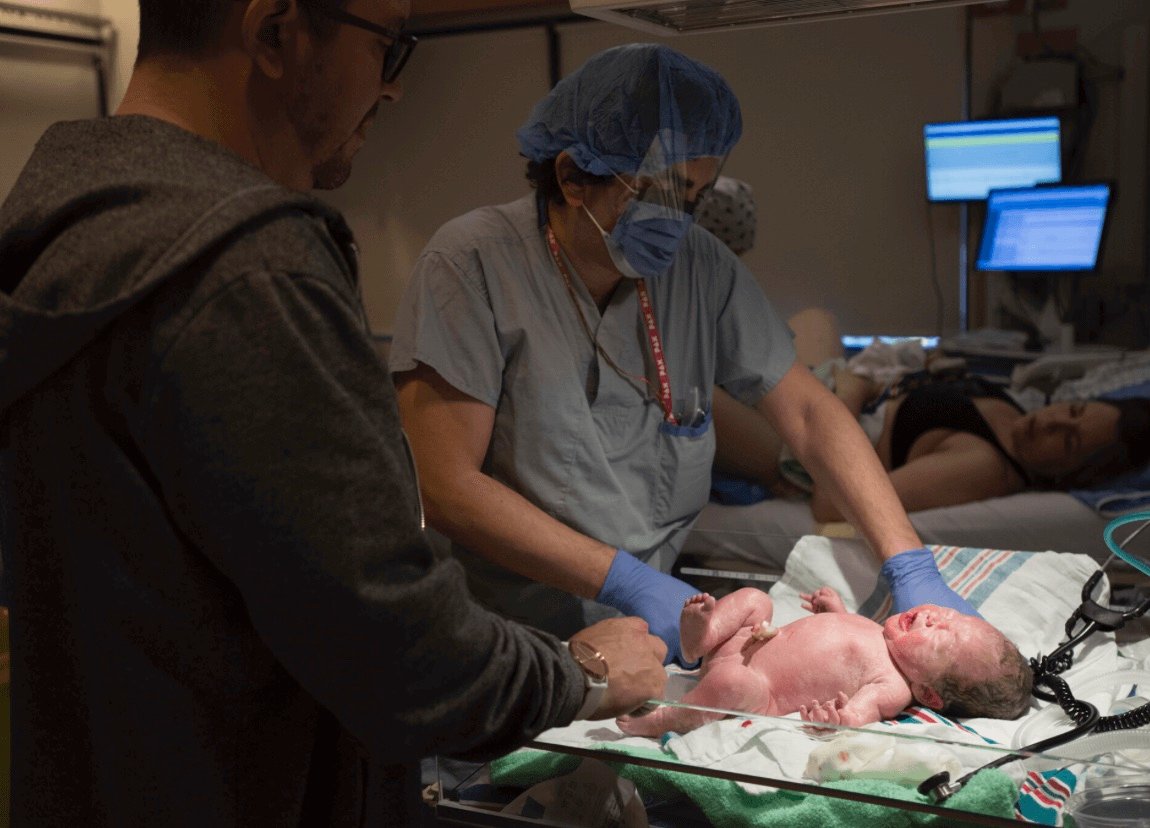Canada’s fertility rate has reached an all-time low, marking a significant demographic shift in the country. In 2023, the fertility rate dropped to 1.26 children per woman, down from 1.33 in 2022. This decline places Canada among countries with “lowest-low” fertility, joining nations like South Korea, Japan, Italy, and Spain. A “replacement level” fertility rate, which allows a population to sustain itself from one generation to the next, is typically around 2.1 children per woman. Canada, like other developed economies, is now well below this threshold.
The population growth in Canada is now primarily driven by immigration, accounting for 97% of growth between 2022 and 2023. Despite welcoming 1.1 million immigrants during that period, there were only 351,000 births, highlighting the disconnect between population growth and fertility rates. This situation is increasingly relying on immigration to offset a declining birth rate, as seen in other countries like Germany, where an influx of Syrian refugees helped bolster its fertility rate in recent years.
Provincial differences show that British Columbia has the lowest fertility rate at 1.0 children per woman, while Saskatchewan leads the country with 1.63, higher than the fertility rates of the U.K. and Germany.
Historically, Canada once had the highest fertility rate among G7 countries in 1960, with 3.81 children per woman, but societal changes such as the introduction of birth control and legal abortion have contributed to the long-term decline. Today, Canada faces challenges similar to Japan, where low fertility combined with low immigration has resulted in population decline and social issues like labor shortages and aging populations in rural areas. Canada has so far been spared a similar fate due to its robust immigration policies, but the continued decline in fertility presents long-term demographic and economic challenges.










0 Comments